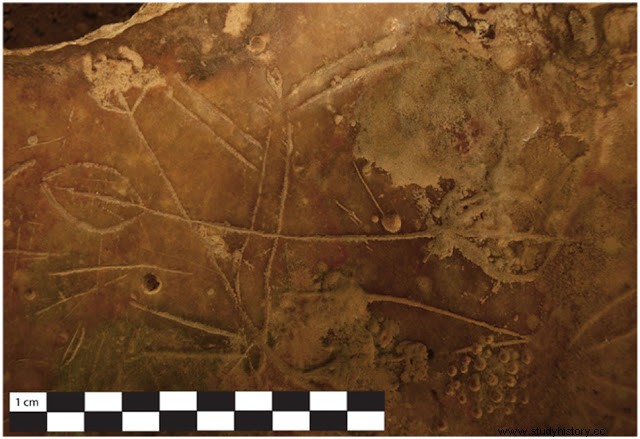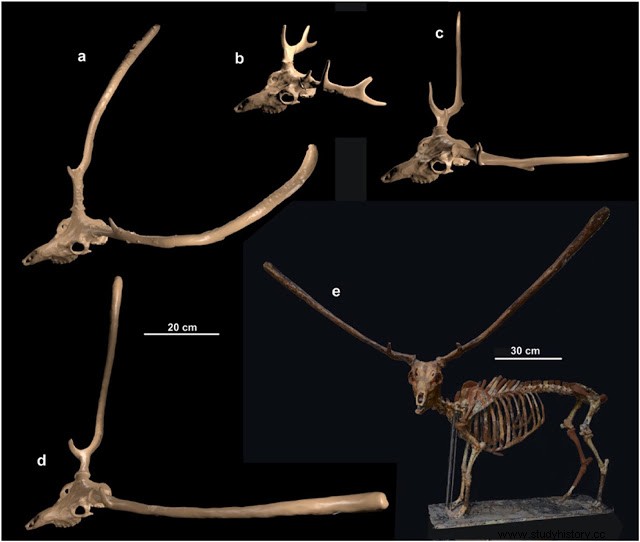Known since the 1970s, the petroglyphs of the Asphendou cave in the west of the island of Crete constitute the oldest figurative art in all of Greece.
The motifs represented are mostly abstract and geometric, but there are also up to 37 images of quadrupeds. At first it was thought that they could be before the Neolithic (before 6500 BC), while some experts assigned a more recent date, at the end of the Bronze Age (after 3000 BC).
But a study conducted in 2016 and now published in the Journal of Archaeological Science suggests that they are actually much older, and may have been made in the late Pleistocene or early Upper Paleolithic, more than 12,000 years ago.

A three-dimensional model of the prints was made using photogrammetry. And although many of the glyphs are less than 1 millimeter deep, they were able to capture the drawings with greater precision than in the 1970s, even the most subtle details. The archaeologists thus discovered a sequence of four levels in the carvings, from the oldest engravings to the most modern.

Each of the levels has marks from different tools and contains different iconographic motifs, the highest being the deepest in terms of carving.

The second level presents circles and spirals whose meaning is unknown, but which have also appeared on other Aegean islands, such as Andros or Naxos. These motifs would date from the early Bronze Age (circa 3500–2800 BC).
The last two deep levels are where the representations of 37 quadrupeds appear, along with a series of unidentified objects that could be hunting tools. The animals have skulls with long horn-shaped appendages, which the researchers identify with specimens of the Pygmy Deer (Candiacervus ropalophorus ).
The presence of dwarf terrestrial fauna in insular environments was common in the Pleistocene and Upper Paleolithic, and remains of this species were found in the nearby Gerani cave, which leads to dating these petroglyphs before 10,000 BC.

The hypothesis is reinforced because this type of deer had become extinct at least 7,000 years before the Bronze Age, and no artist of that time could have seen them to reproduce it in the Asphendou cave.

